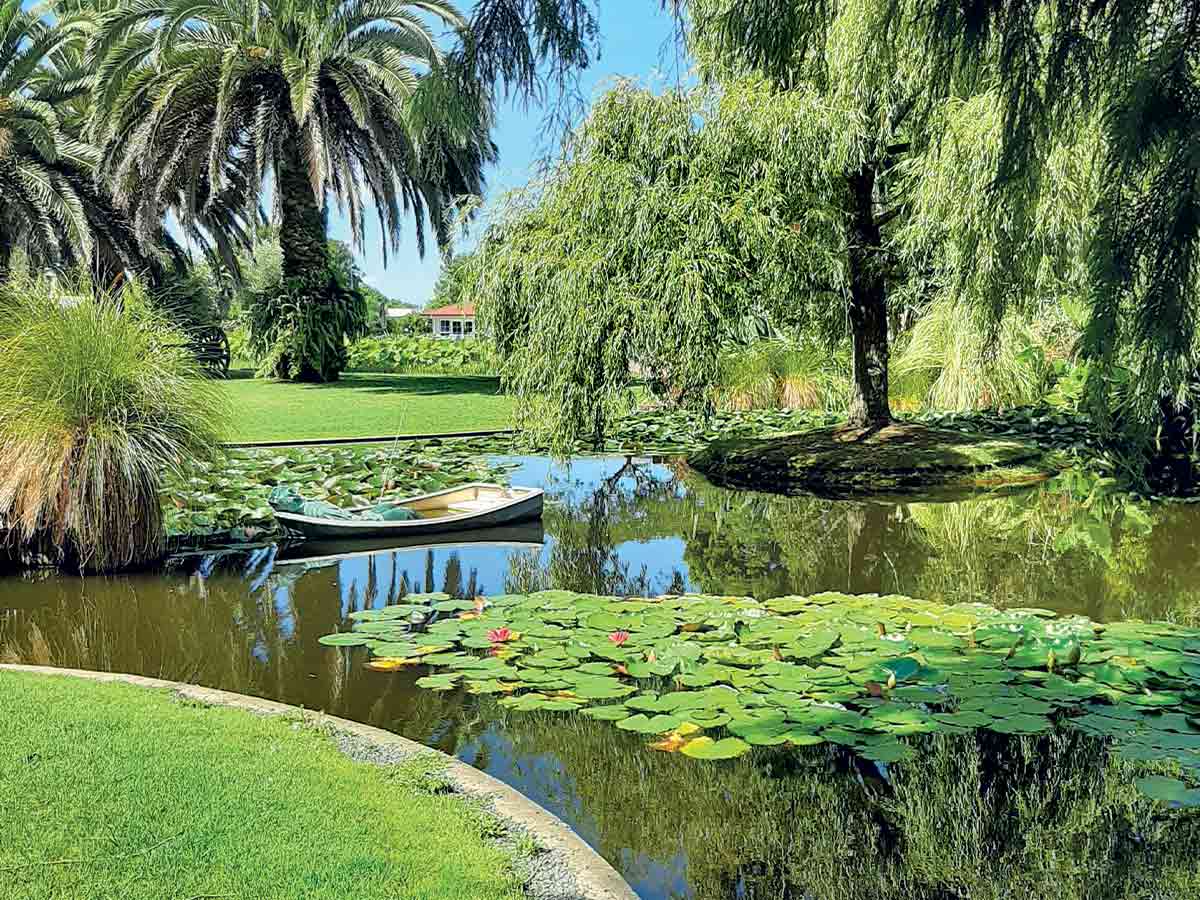Heather Whelan has long had Ngatea on her ‘must-visit’ list. Coromandel Peninsula is a favourite spot to visit but stopping off along the way has been sidelined for her last few trips, until now.
We’d been meaning to stop at Ngatea for some time – the cafés along the main street always look tempting – but usually, we’re heading to, or from, the Coromandel Peninsula and hadn’t considered Ngatea as a destination in its own right.
However, after visiting the Ngatea Water Gardens and exploring the town, we can wholeheartedly recommend it as a stop. There’s even freedom camping right in the town centre at the Hauraki District Council car park.
Weird and wacky water gardens
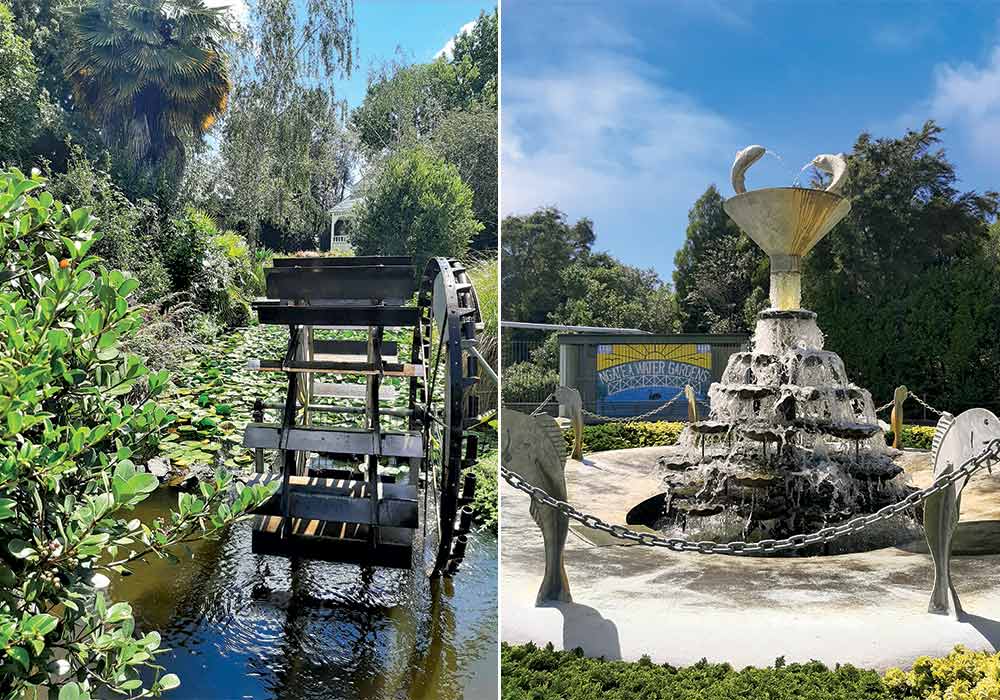
Right: Magical fountains are dotted around the property
The Water Gardens are tucked away behind Ngatea’s main street. As we pulled into the car park, we got the first inkling of what was in store for us. Our space was reserved for ‘wizards, oil refiners, and unemployed miners’. Every other parking space had the same quirky kind of signage. The creators of the gardens, Roger and Emma Blake, obviously have a sense of humour. At every turn throughout the two hectares, there’s something to make you smile.
Paths led us over bridges, past lily ponds, water wheels, and fountains, beside a castle and above a waterfall. Everything was lush and flowers bloomed. Unlike conventional gardens, though, we came across things such as parking meters in a lake. They had the instruction, ‘boat parking only.’ Another sign warned of a ‘fork in path ahead’. Sure enough, there was a garden fork cemented in. ‘Please close the gate’ said the notice on the gate sheltering ‘sheep’. Of course, there was no fence attached to the gate. There were lots more amusing signs, but I won’t spoil things by relating them all – I’m sure you’ll want to visit and discover them for yourself.
A mammoth undertaking
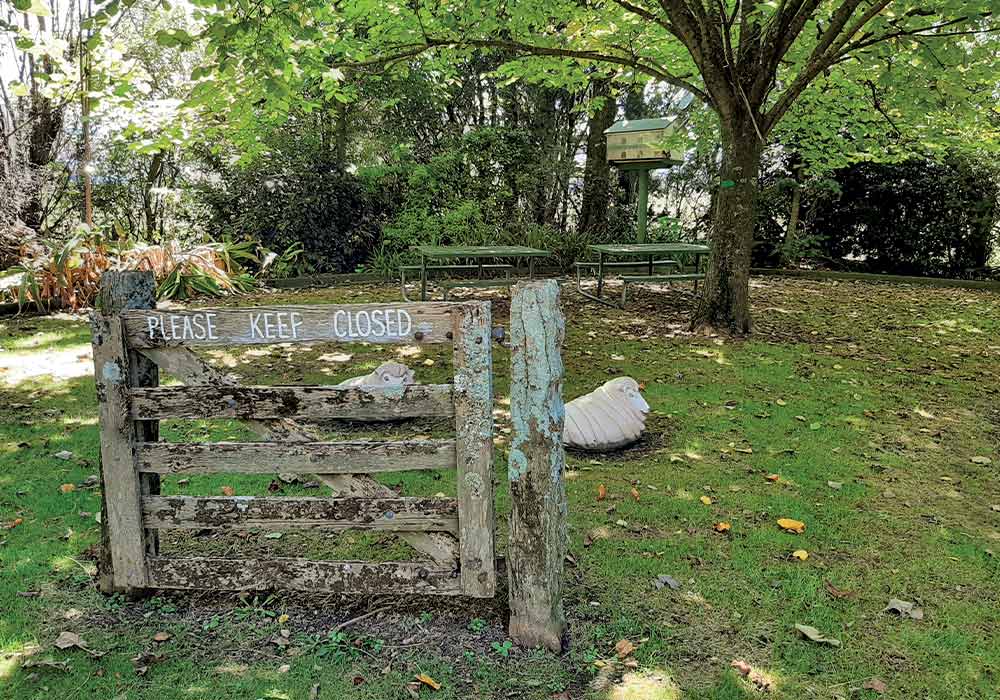
It’s hard to realise that back in 1995 when Roger and Emma started work on the gardens, there was nothing but bare paddocks at the property. They had little gardening experience, but they had a dream – and the drive to create it. Roger borrowed his father’s excavator and dug out 5000 cubic metres of clay to form the four ponds. This clay, together with topsoil, contoured the surrounding areas. Later, tonnes of greywacke rocks were delivered. Roger built the waterfall with 200 tonnes of them, which he set into concrete to form the waterfall. This pumps 100 litres of water per second, which cascades down into one of the ponds.
Underground services were installed (power, irrigation, and lighting) and area by area, the gardens were planted. Roger built the large structures, such as the castle, barn, and bridges, himself, although, the couple had help from family and friends. After all, this huge project was done after work and on weekends. Ngatea Water Gardens opened to the public in 1998, just three years after starting the enterprise.
Now well established, the gardens boast splendid mature trees and shrubs. In the ponds, you’ll see water lilies and lotus, which are home to goldfish, ducks, and black swans. Peacocks parade on the lawns and bees buzz among the mesmerising array of flowering plants. There are also some ancient turtles, believed to be among the oldest in New Zealand.
Arthur’s Canny Museum
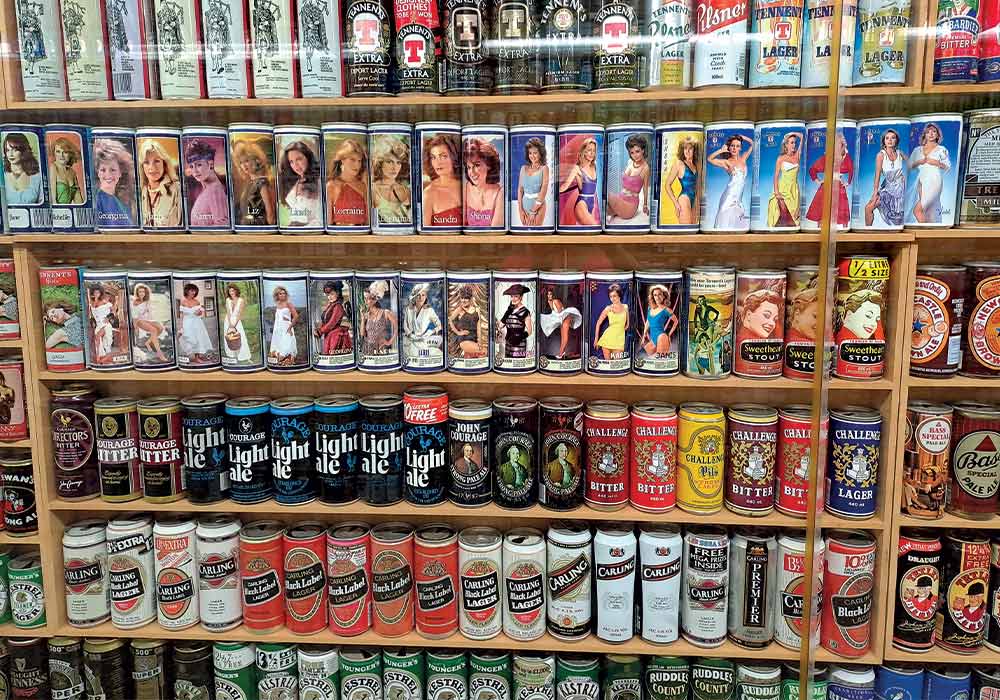
While it looked like a humble garden shed from the exterior, it’s fair to say that stepping inside took us by surprise. Inside were seemingly endless rows of drink cans, much like a kaleidoscope for the eyes. Featuring more than 10,000 different drink cans, this unique museum is New Zealand’s only collection of beverage cans of this scale on display to the public. Information in the museum explained that Roger’s late father, Arthur, picked up a beer can from the roadside one day and so started this collection. It was interesting to peruse the different beer, soft drink, and unusual cans; the oldest was 50 years old and there were many fascinating ones from overseas.
A history of excavation
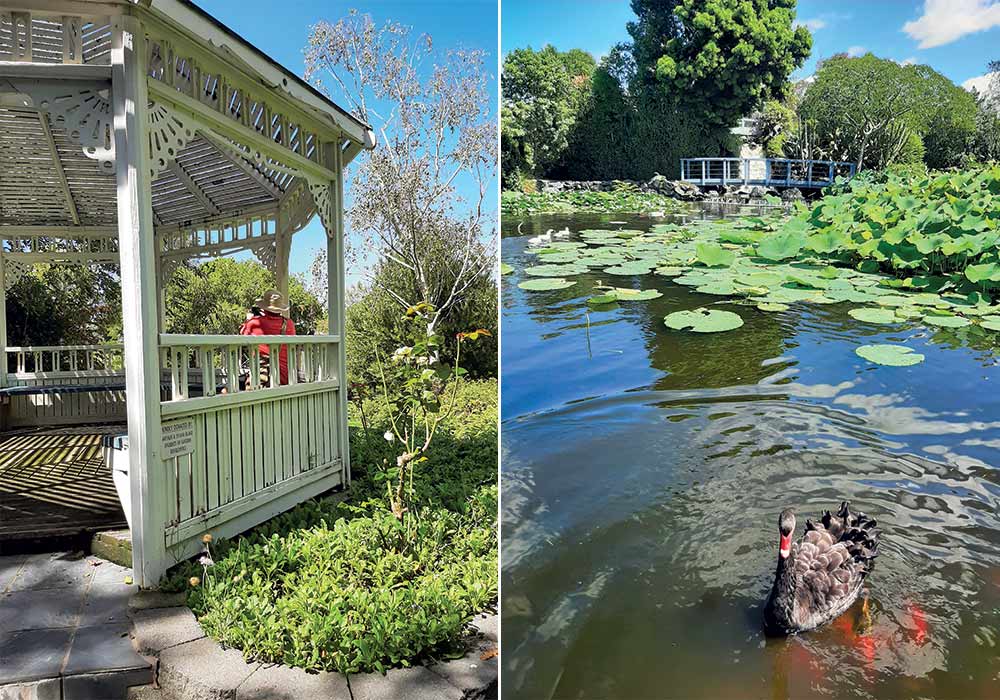
Right: Lakeside tranquillity
It’s apt that the Blake family constructed water gardens at Ngatea because water and digging are central to Ngatea and the Hauraki Plains area. Early in the 20th Century, people drained the peat swamp, bog, overflowing rivers, and Kahikatea forests so they could farm the land. The first drains and stop banks were hand-dug. There’s a sculpture named Plains Pioneer by Paul Dibble commemorating these drain diggers in Pioneer Park in the town centre. Nowadays, there’s a vast network of canals, drains, floodgates, and pumping stations that keep the land from being inundated.
Early travel in the area was by water, but as roads were built, a bridge was needed at Ngatea. A unique central lift span bridge was constructed in 1917, linking both sides of the Piako River. Until they replaced it in 1960, the bridge served as a landmark in the area. To celebrate the start of the new millennium, a half-scale working replica of the bridge’s central span was constructed in the Tilbury Reserve, beside the river.
In Aunt Daisy’s footsteps
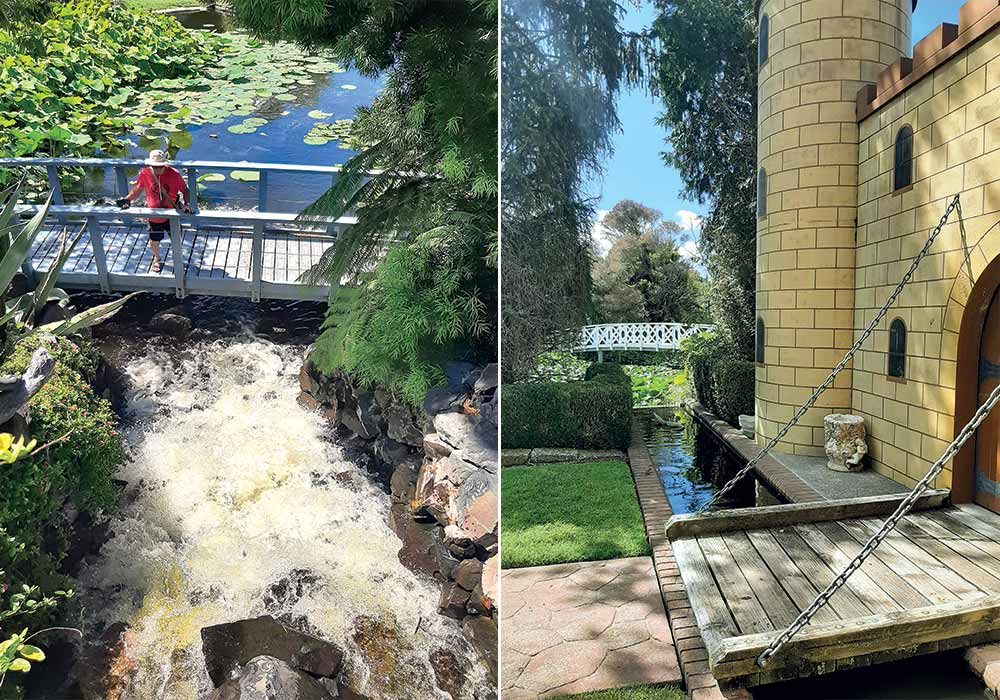
Right: The castle, moat, and drawbridge at the heart of the property
One engineer who worked for the Hauraki Plains Council was Frederick Basham. His wife, Maude, who became better known as Aunt Daisy, began her radio career when they lived in Ngatea. Her popular radio programme made her a star of the domestic. She became a celebrity food writer, with her cookbooks running to several editions – 2010 saw one on its 22nd reprint.
Ngatea has obviously taken heed of its famous cook and baker. I’d spotted half a dozen cafés in the little town. We couldn’t sample them all (this time) but had morning tea at The Glory Company, where the Aunt Daisy tradition continues with great coffee and baking.
Year-round delight
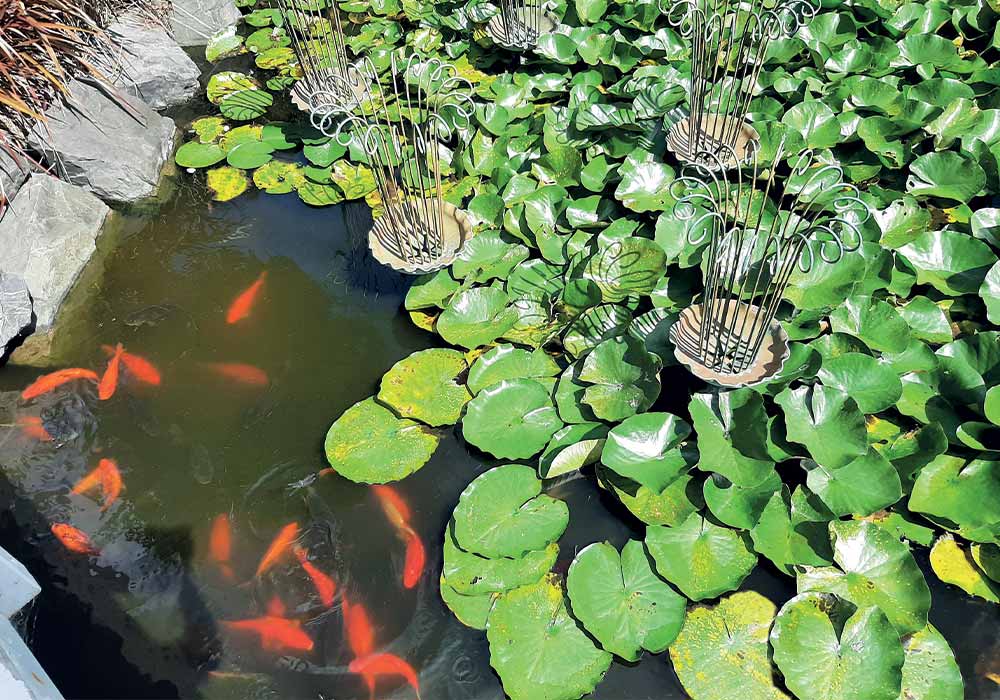
Ngatea Water Gardens has been cleverly planted to offer year-round visual delights, and there’s no doubt that it’s a fun place to meander and explore. Winter hours kick in from 1 May, where the usual Sunday to Thursday opening hours are limited to Sunday only, through until 1 October, so if you’re planning to travel and explore, consider this to avoid disappointment. It’s a wonderful spot to spend time for all ages and there’s a wheelchair-friendly path through the gardens.

